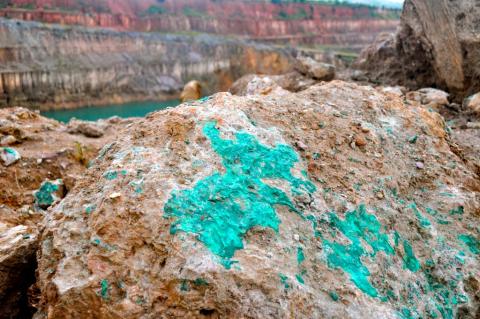
Charting Indonesia’s oil, gas and mining from local extraction to local benefits
Charting Indonesia’s oil, gas and mining from local extraction to local benefits
Indonesia’s 2010 and 2011 EITI Report plots the value of its natural resources in detail.
Understanding the money flow in the extractive industry poses a challenge to any country. In Indonesia, with 245 million inhabitants, 13,000 islands, 500 districts and 750 spoken languages, this is especially challenging.
Read more: Indonesia: Transparency across 13,000 islands.
In June, Indonesia released its 2010 and 2011 EITI oil, gas and mining reports unveiling a wealth of information about Indonesia’s extractive industries. “The latest EITI Indonesia report provides all stakeholders with a clear snapshot on the current situation. Compared to the 2009 EITI report, this report is larger in scale and contains more detailed information than what was previously available. The findings indicate that maintenance of revenue records system need to be upgraded as soon as possible", said Emy Perdanahari, Head of the Indonesia EITI Secretariat, at the launch of the report.
Read more: the 2010/2011 Indonesia EITI Report
More detail, stronger accountability
The oil and gas report discloses production volumes and revenues generated by each of the 71 producing oil and gas blocks in 2010 and 2011. Indonesia’s oil and gas sector is governed by production sharing contracts. Indonesia’s oil and gas report provides data per production sharing contract rather than more aggregated company-by-company figures. “Project level reporting was demanded by local communities and local government to verify that company payments match with what is in government records. It is also important for tracking the performance of each company in terms of compliance with their obligations towards state revenue. Detailed reporting will enable better analysis and comparisons with other data sources which will hopefully shed light on potential lost revenue and give policy recommendations to improve extractive industry governance", said Maryati Abdullah, National Coordinator of PWYP Indonesia.
A total of 71 oil and gas operators and their 99 non-operating partner companies provided data for the report, generating a total of US$ 37.1 bn in government revenues in 2011. Revenues from the 71 mining companies participating in the 2011 mining report paid US$ 7.8 bn in revenue in 2011, which is US$ 3.6 bn less than the amounts declared in the 2011 Central Government Financial Report (LKPP). This difference appears to be due to the revenue contribution of the many small mining companies considered immaterial for EITI reporting purposes. Mukhlis Ishak, representing the Indonesian Mining Association and PT Freeport Indonesia, highlighted the need for further outreach to the mining companies operating in Indonesia. “PT Freeport Indonesia is honoured to be part of the second edition of the EITI Report and is encouraged that there were no major unreconciled transactions. It has been quite challenging for the EITI Secretariat to ensure timely submission by the reporting entities. The EITI Secretariat as well as fellow reporting entities need to reach out even more to get more participants on board in future reports", he said.
From oil to money
Indonesia’s total oil production amounted to 898 000 barrels per day in 2011, which according to the report is equal to two thirds of Indonesia’s daily oil consumption. The majority of Indonesia’s revenue from this production is collected ‘in-kind’ in barrels of oil, which is then sold to domestic refineries and foreign markets. In many countries, the proceeds from such sales remain opaque. However, Indonesia’s report provides some insight into what the government did with the 187 million barrels of oil - 57% of total production - that it received in revenue in 2011. The majority of this oil was sold to the state-owned company Pertamina’s refineries for domestic use for a total of US$ 17.7 bn. The remaining part of the government’s share was sold off by the oil and gas operators appointed to sell oil on behalf of the government. The government invoiced the operators for a total of US$ 3 bn in 2011 for these export sales. A breakdown of invoices per company is provided in the EITI Report, with further details on actual payments available from a separate report provided by the Directorate General of Budget.
Sharing the benefits
Most of Indonesia’s oil and gas revenue is collected by the central government and then redistributed by the central government to the provinces in which production sites are located, including to all of the producing and nonproducing districts within those provinces. Indonesia assigns 15.5 % of oil and 30.5 % of gas revenues to regional levels of government. The sharing arrangement further foresees that the provinces, districts and municipalities, where the oil and gas is produced are entitled to a specific portion of the regional allocation. The EITI Report discloses how much money was actually transferred to the provinces and districts in 2010 and 2011, enabling citizens to check whether their region received what it ought to from the extraction taking place in their neighbourhood.
For further information about the EITI Indonesia, please visit the country page on the EITI website and the national EITI website.



